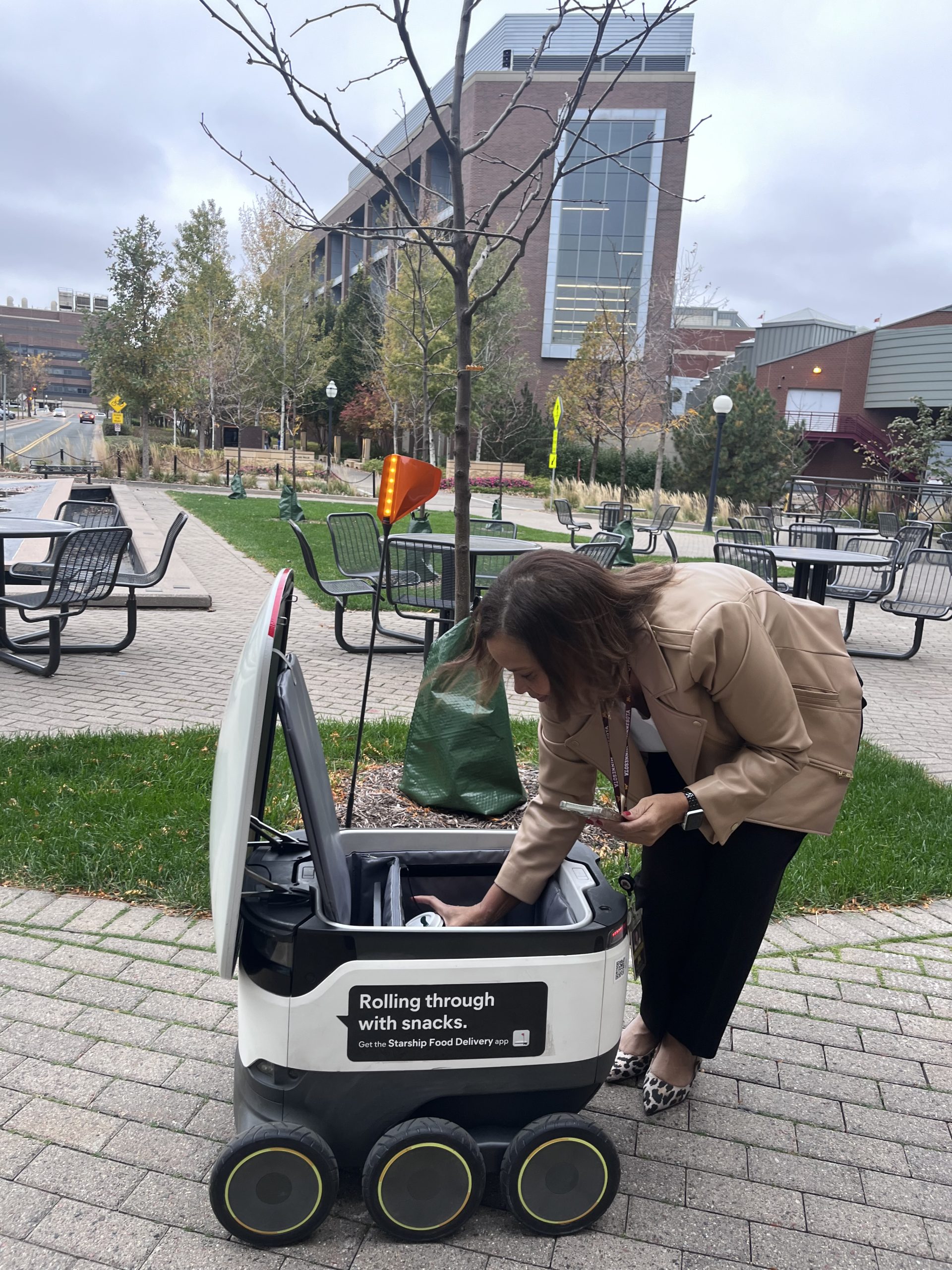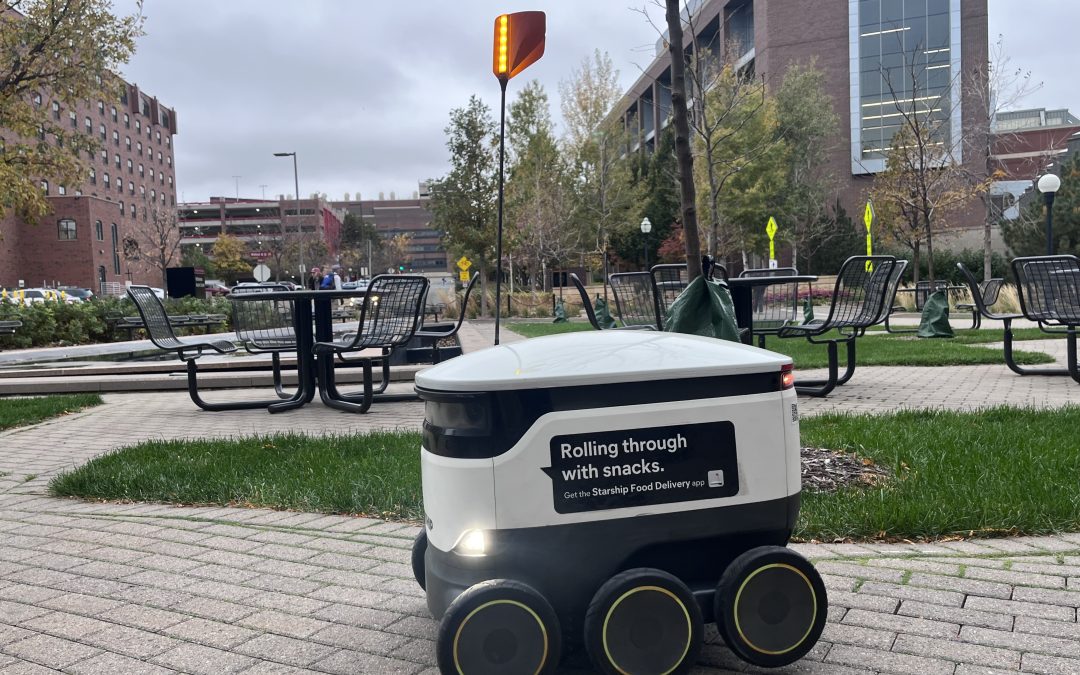At Food On Demand, we’ve been covering the rise of autonomous delivery robots for quite some time. So, when we heard that these robots had officially launched in Minneapolis—right in our backyard—we were eager to check them out.
The University of Minnesota (U of M) recently teamed up with Starship Technologies to launch robot food deliveries on campus.
The program launched just last month and 600 deliveries have already been made, bringing hot food to students on campus from spots in the Student Union like Panda Express, Erbert & Gerbert’s and others.
Testing the robot delivery experience
Alice Roberts-Davis, vice president of University Services, says the students are loving it.
“They like that they can order food in between classes without having to travel. It’s great for people with tight schedules who are in between long days of meetings or classes and it helps them solve the problem of not having food service in the building they are located,” she said.
The U of M campus is large, but that’s no obstacle for the robots designed to deliver food across both the east and west banks. By dropping a pin on the Starship app, students can select a delivery location anywhere on campus—even on lawns—or opt for one of the designated delivery hubs around the area.
That all sounds great, but let’s put it to the test. We watched as Roberts-Davis placed an order for a coffee and dropped her pin location. Shortly after, there it was, rolling towards us with its orange flag raised. When it stopped, she entered a code to open the lid and just like that her coffee was delivered, still hot and intact. Then, the robot zipped off, avoiding students on its way.
Robots take on Minnesota’s winters
But of course, being in Minnesota, there’s one big factor to consider: the winter.
“That was one of the major concerns that we had when we first started these conversations. We have a really different climate than some of our peer institutions,” Roberts-Davis said.
The robots are traded out with snow tires in the winter and can go through between four and six inches of snow.
They travel at five mph and are equipped with sensors to avoid obstacles and get smarter as they operate with machine learning. The bots are capable of navigating sidewalks, climbing curbs, crossing streets and can travel at night.
Roberts-Davis explained the bots are “very cautious,” adding with a chuckle that they “wait an inordinate amount of time before crossing the street to make sure it is completely clear.”
Campus mapping and city approval
Ahead of the launch, Starship mapped the entire campus.
“They spent several days on campus, allowing the robots to traverse the campus, figure out the mapping, determine where it needs to cross streets, where it needs to go over and what it needs to do to get to certain locations,” explained Roberts-Davis.
The U of M did have to get city approval and permits to allow the program and received a one-year trial period.
Roberts-Davis said there are only one or two city streets that the robots have to cross over to reach their sidewalk routes. Mostly, the routes are all on campus. However, in the future, she says they’d love to expand even further to apartment buildings for students living off-campus.

Alice Roberts-Davis, vice president of University Services grabs her coffee from a Starship robot.
The delivery service operates from 7 a.m. to 7 p.m., coinciding with the Student Union hours. When the job is done for the day, the robots all “return home” to a central charging station, where they are autonomously charged.
“Like the seven dwarfs,” Roberts-Davis joked. Well, technically the “15 dwarfs” as that’s how many are operating on campus right now.
When the robots first arrived, concerns were voiced about replacing jobs.
However, the university sees the program as a way to create opportunities, as additional staff may be needed to prepare food for delivery as the program ramps up. The goal is also to boost business for campus retail locations.
Students in engineering also get to work on the robots, gaining both paid experience and learning opportunities.
“We’re looking forward to seeing how the campus community embraces our robots,” said Chris Neider, vice president of business development at Starship Technologies. “We’ve been doing deliveries on college campuses since 2019 and those students and staff have enjoyed the convenience of having food delivered when and where they want it. That means fewer skipped meals, sleeping in a bit longer and more time for studying or hanging out with friends. And, in the case of the Golden Gophers’ campus, it also means getting deliveries during the frigid winter weather!”


